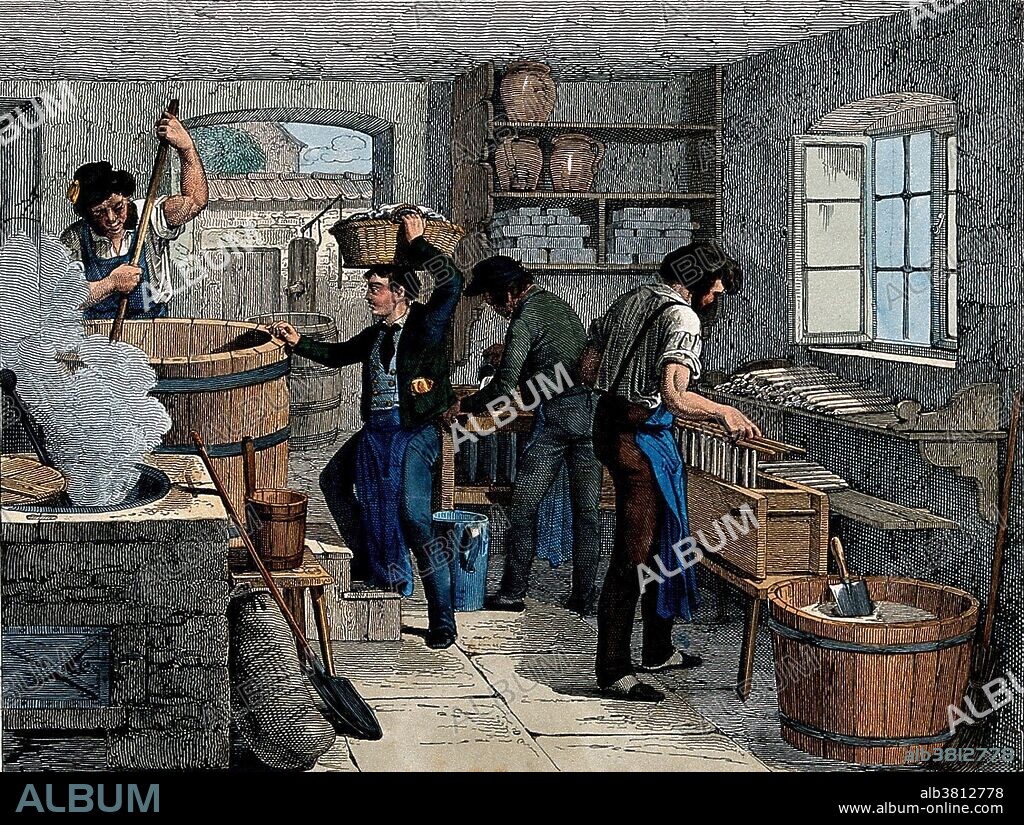alb3812778
candle making

|
Zu einem anderen Lightbox hinzufügen |
|
Zu einem anderen Lightbox hinzufügen |



Haben Sie bereits ein Konto? Anmelden
Sie haben kein Konto? Registrieren
Dieses Bild kaufen.
Nutzung auswählen:

Titel:
candle making
Untertitel:
Siehe automatische Übersetzung
Men working with molds for candle-making The earliest surviving candles originated in China around 200 BC, and were made from whale fat. European candles of antiquity were made from various forms of natural fat, tallow, and wax. In the Middle Ages in Europe, tallow candles were the most common candle. By the 13th century, candle making had become a guild craft in England and France. The candle makers (chandlers) went from house to house making candles from the kitchen fats saved for that purpose, or made and sold their own candles from small candle shops. Beeswax, compared to animal-based tallow, burned cleanly, without smoky flame, but they were expensive, and relatively few people could afford to burn them in their homes in medieval Europe. In the 18th century, spermaceti, oil produced by the sperm whale, was used to produce a superior candle. Late in the 18th century, colza oil and rapeseed oil came into use as much cheaper substitutes.
Bildnachweis:
Album / Science Source / Wellcome Images
Freigaben (Releases):
Model: Nein - Eigentum: Nein
Rechtefragen?
Rechtefragen?
Bildgröße:
4200 x 3165 px | 38.0 MB
Druckgröße:
35.6 x 26.8 cm | 14.0 x 10.6 in (300 dpi)
Schlüsselwörter:
BELEUCHTUNG • BERUF • BESATZUNG • BRUDERSCHAFT • BUCHMALEREI • BURSCHENSCHAFTEN • GILDE • ILLUMINATION • ILLUSTRATION • ILLUSTRATIONS • INNUNG • KAUFMANN • KERZENZIEHER • VEREIN • ZUNFT
 Pinterest
Pinterest Twitter
Twitter Facebook
Facebook Link kopieren
Link kopieren Email
Email
